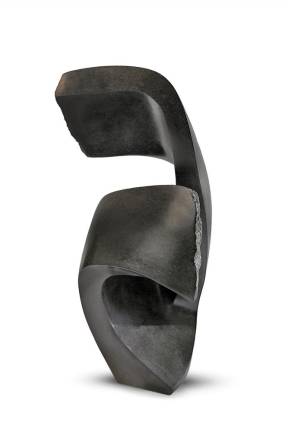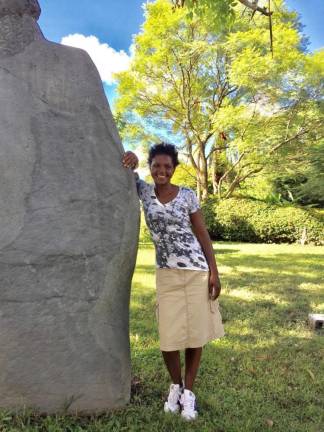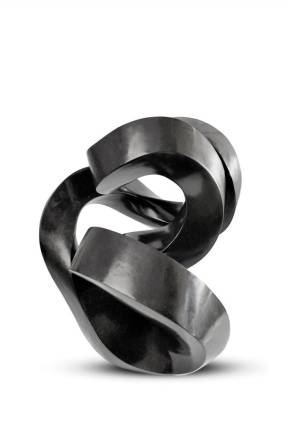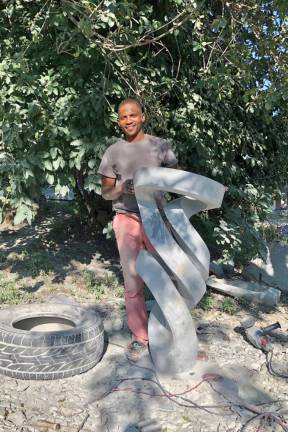A ‘New Wave’ of African Sculpture
Shona artists from Zimbabwe create contemporary works for UES gallery exhibit




A new generation of artists are mastering and evolving the internationally known Shona Sculpture art form in Zimbabwe, creating ongoing demand from elite art galleries and private collectors world-wide for their varied and modern interpretations of a stone carving tradition.
Peter Gwisa and Perlagia Mutyavaviri, two of the artists currently being featured in the Shona Sculpture exhibit at the Bonner David Gallery on the Upper East Side, are part of this “new wave” - the third generation of sculptors in a movement that quickly gained momentum, and subsequent prominence, with the creation of the National Gallery of Zimbabwe (then Rhodesia) in the 1950s.
The exhibit’s curator, Braden Coolidge, tells of relationships to Shona artists that date back 27 years – with some parents and grand-parents of the latest group – connections that started when he was a college student on a six-month internship from the University of Southern California. He was impressed by the “amazing work” he saw in galleries then and quickly developed a passion, and later a career, in artwork from the region. He speaks enthusiastically about the evolution of the sculptures.
“[Gwisa and Mutyavaviri] work is so different than anything that has come before,” he said, gesturing to the gleaming, distinct pieces elegantly displayed throughout the light, airy gallery space. “So unique, the abstract ... the flowing ... the balance of it ... the complexity of it.”
Dense Rocks
In Zimbabwe, the Shona people are the vast majority of the population. The landscape is scattered with abundant outcroppings of very old, incredibly dense rocks that hold up well to carving, sanding and shaping. Some artists from other ethnic groups in the country also create artwork that fall under the “Shona Sculpture” umbrella. The term has an interesting backstory, Coolidge shared.
Frank McEwen, a British artist and museum administrator, hired as director to oversee the building, staffing and curating of art for the new national gallery, was gifted with items made of stone from workers who were grateful for the employment. One of the first gifts, it is said, was a stone mug with a handle and, intrigued, McEwen asked “this is really interesting, do you have anything more?” They quickly made many more.
While the people of Zimbabwe have likely been working with stone items for many generations, McEwen is credited with “recognizing and encouraging the innate talent” of the Shona people to create more and more aesthetic objects during his years as director, work that that he showcased, not only in African galleries and museums, but also throughout Europe.
“It is as if they have been artists their whole lives and didn’t know it,” Coolidge said of that first generation of internationally recognized sculptors.
Art Exports
This modern artistic stone carving became known as the Shona Sculpture Art Movement - highly differentiated from the mass-produced street curios tourists could quickly purchase at a roadside stall on their way to the airport - changing in form and expression with each generation, yet still one of Africa’s leading and most recognizable art exports.
And as fortune would have it, there seem to be a limitless supply of the unique sculptable rocks of many colors – if only a few dozen skilled artists to bring the masterpieces to life - found only in Zimbabwe: a massive geological formation called the “Great Dyke” – 8 miles wide and more than 330 miles long, running the length of the country from north to south.
These “metamorphic stones” include some of Gwisa’s and Mutyavaviri’s gray-black Springstone sculptures, where a large, solid boulder is purchased at the quarry, carted away to be hammered, carved, filed and polished to the shiny display quality we finally see on view.
It is hard work, this rock sculpting business. Heavy lifting, hard material, dusty, noisy, long, long hours and weeks; yet those who are drawn to the Shona sculpture tradition seek out the elders for years-long apprenticeship opportunity, or have it passed on directly from a parent or relative. They put the work and time in – for a glorious finish.